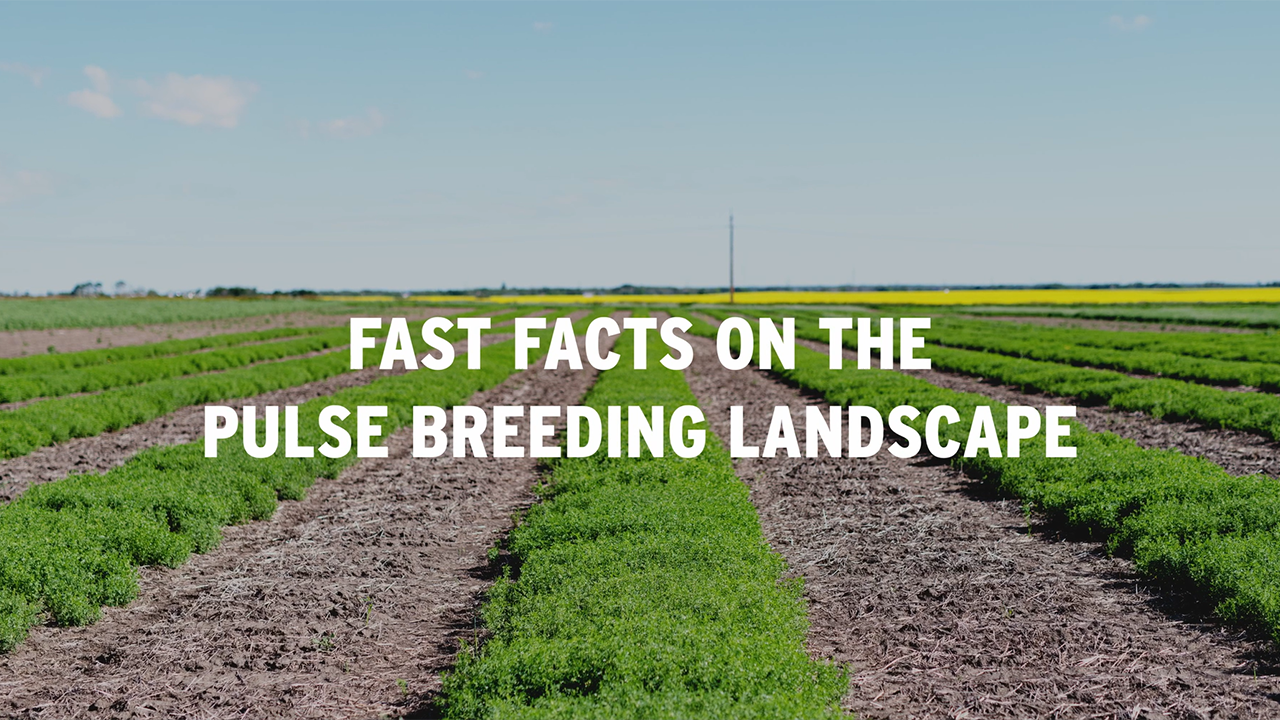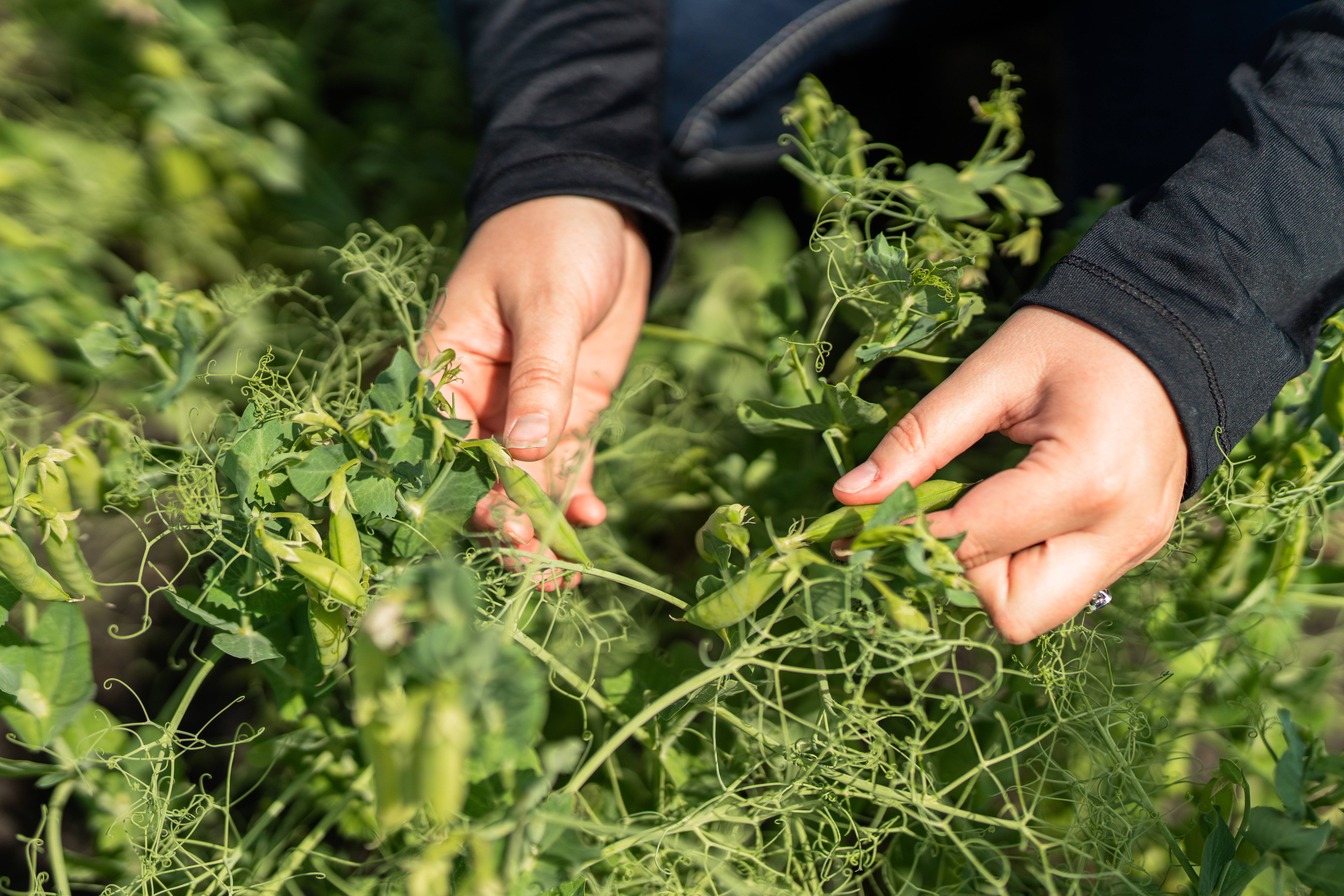Breeding and variety commercialization is a key area of investment for SPG.
Putting better-performing varieties in the hands of growers is an important strategic priority to increase profitability while sustaining quality. SPG is targeting investments in multiple breeding programs, both private and public, to drive competitive variety advancements for pulses.
Key priorities for breeding vary by crop but include:
- Root rot resistance
- Herbicide tolerance
- Protein
- Maturity
- Adaptability
- Drought tolerance
The Future of Pulse Breeding in Saskatchewan
Everything pulse growers need to know about breeding, variety commercialization, and royalties:
The Crop Development Centre (CDC) and Saskatchewan Pulse Growers (SPG) had partnered on pulse breeding for 20 years.
- Latest agreement ran from 2005–2020
- SPG provided a large amount of funding and received exclusive access to varieties through the program
- SPG commercialized those varieties royalty-free to Saskatchewan growers
- SPG was interested in continuing with this model, while CDC was interested in moving to a different model with multiple funders and to generate revenue from the marketplace on the sale of their varieties
- SPG was interested in continuing the royalty-free commercialization model for the future
- The CDC chose to discontinue offering a royalty-free breeding and variety commercialization model for the future, therefore the previous royalty-free model that SPG was interested in was no longer available
- SPG had to re-think its role in pulse breeding and landed on making breeding investments with multiple public and private partners, including with the CDC
- SPG is led by farmers like you and did not take this direction lightly, but ultimately felt that a competitive breeding environment would provide the best chance to solve many of the current on-farm challenges and risks facing the industry
- Given the comparatively small acreage of pulses in Saskatchewan and globally, investments in pulse variety development lags other commodity crops
- Royalties are an important incentive to attract investment into new pulse breeding efforts and drive innovation
- In order to attract breeders and demonstrate return on investment, there is an important need to capture value on seed. If not, no new investment will be realized and variety gains will be slower
- The on-farm challenges, like root rot, that pulse growers are currently facing, are complex and require additional investment and expertise to deliver solutions
- Multiple pulse breeders competing to bring to market the best-suited varieties for Saskatchewan growers will drive innovation and accelerate the release of new, better-performing varieties which must compete with existing royalty-free varieties
- More competition helps keep price of seed and costs associated with royalty capture models, such as Variety Use Agreements (VUA), at acceptable levels
- Royalty models and structures will vary on a variety-by-variety basis when new options become ready to be commercialized
- Currently, the most popular royalty capture model is the Variety Use Agreement (VUA)
- The most common VUA cost for Western Canadian varieties is $2–5/acre
- Increased competition in pulse breeding will assist in keeping fees at an acceptable level
- New varieties released with royalties attached will need to have higher yield or other valuable characteristics to justify the increased cost in order for farmers to adopt them
- VUA is one example of a royalty capture model and is a contractual agreement between the farmer and the seed distributor outlining the maximum fees associated with future farm-saved seed
- The online system provides a mechanism for seed use declaration and collection of fees
- The seed distributor collects fees through VUA and submits them back to the plant breeder
- Yes, you are permitted to continue using farm-saved seed
- If a farmer chooses to grow existing royalty-free varieties, farm-saved seed use will continue to be permitted with no royalties
- If a farmer chooses to grow a new royalty-bearing variety, and wishes to use farm-saved seed, there would be a per acre fee to do so
- Grower autonomy and the choice to grow new royalty-bearing varieties or existing royalty-free varieties will remain
- SPG continues to have a say in the de-registration of any existing royalty-free varieties and has no plans to de-register varieties that farmers continue to grow
- Scenarios where varieties could be supported for de-registration include if there are little to no acres grown or if negative quality issues arise
- Investing in variety development is only one area in which growers’ levy dollars are invested by SPG. Other important areas that require funding include:
- Other areas of research & development including work to reduce agronomic constraints while maximizing yield and sustainability
- Market growth & diversification including work to expand markets and uses for pulses and pulse ingredients
- Market access & advocacy including championing growers’ interests by actively engaging and collaborating with provincial and national partners
- Grower engagement & extension including communicating important timely information to growers
- Upfront grower investment in breeding is needed to help attract and retain public and private breeding programs in pulses
- Royalties paid directly by farmers will ensure sustainable revenue for competitive breeding programs for the future
- A portion of royalties will flow back to SPG to reinvest back into breeding programs and other priority areas
- As a grower-led organization, SPG, including grower representatives, has a seat at the table to drive growers’ greatest production challenges into the priorities of new breeding programs
- SPG is connected to the growers in Saskatchewan and best aligned to convey the challenges and constraints to pulse production – these priorities will be at the forefront of this and other new breeding collaborations
- Current grower-led breeding priorities for peas and lentils include:
- Root rot resistance in peas and lentils
- Additional herbicide tolerances for lentils
- Increased protein content
- Increased yield under varying conditions
Related Resources
Saskatchewan Pulse Growers and Limagrain Field Seeds Forge a New Path in Plant Breeding for Pulses
July 13, 2022
Seeding Success: Navigating the Future of Pulse Breeding, Variety Commercialization, & Royalties

Importance of Grower Input into Breeding Priorities – The Future of Pulse Breeding in Saskatchewan

Increased Competition in Pulse Breeding – The Future of Pulse Breeding in Saskatchewan

SPG Taking an Investor Mindset – The Future of Pulse Breeding in Saskatchewan

Royalties in Pulses – The Future of Pulse Breeding in Saskatchewan

Pulse Breeding Landscape: Fast Facts

SPG’s New Breeding Partnership with Limagrain: Fast Facts
SPG and Limagrain formed a new breeding partnership in 2022. Learn more about how the…

Pulse Breeding Update

